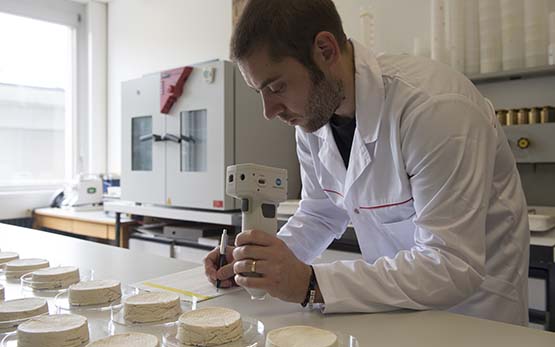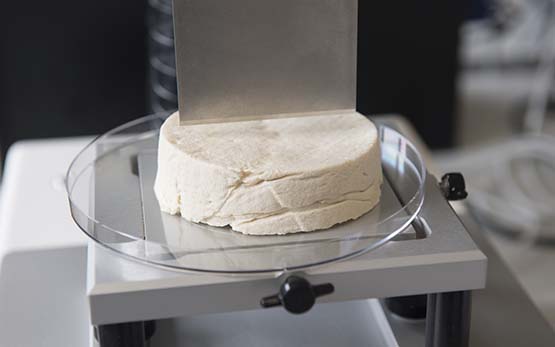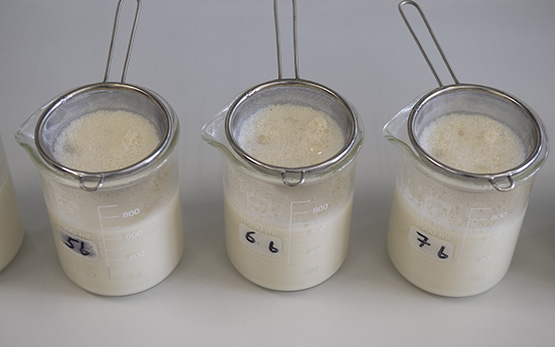
Improving taste
Improving the taste of soya has long been a major goal of our breeding. The unappealing grassy taste of the soya bean can be mitigated by selecting genotypes with fewer lipoxygenases. These enzymes are responsible for the unpleasant taste due to oxidation of fatty acids. “Aveline” and now “Amandine” are two Agroscope varieties that have emerged from this work.
Quality criteria for the tofu sector
The quality of tofu depends on numerous factors. The various steps in the manufacture of tofu clearly affect the rheological properties of the final product, but the biochemical composition of the grain, and therefore the variety, play a crucial role. Yields from the processing of “soya milk” into tofu are very variable. They depend on the total protein content and the quality of the protein contained in the grain. For example, varieties with high protein content have a dual benefit: tofu production per grain unit increases and/or the nutritional value of the final product is greater. The ratio between the two main albumins in soya (glycinin and β-conglycinin) determines the consistency and firmness of tofu.
Other, more easily assessable parameters also need to be investigated closely, such as the colour and size of the grain. For example, a small area of the grain (navel) can sometimes be two-thirds dark in colour. The anthocyanins responsible are water soluble and can give the tofu an undesirable grey colour. As a rule, large seeds absorb water more quickly, so they need to be soaked for less time. When using whole grains, large colourless grains are therefore preferable.







